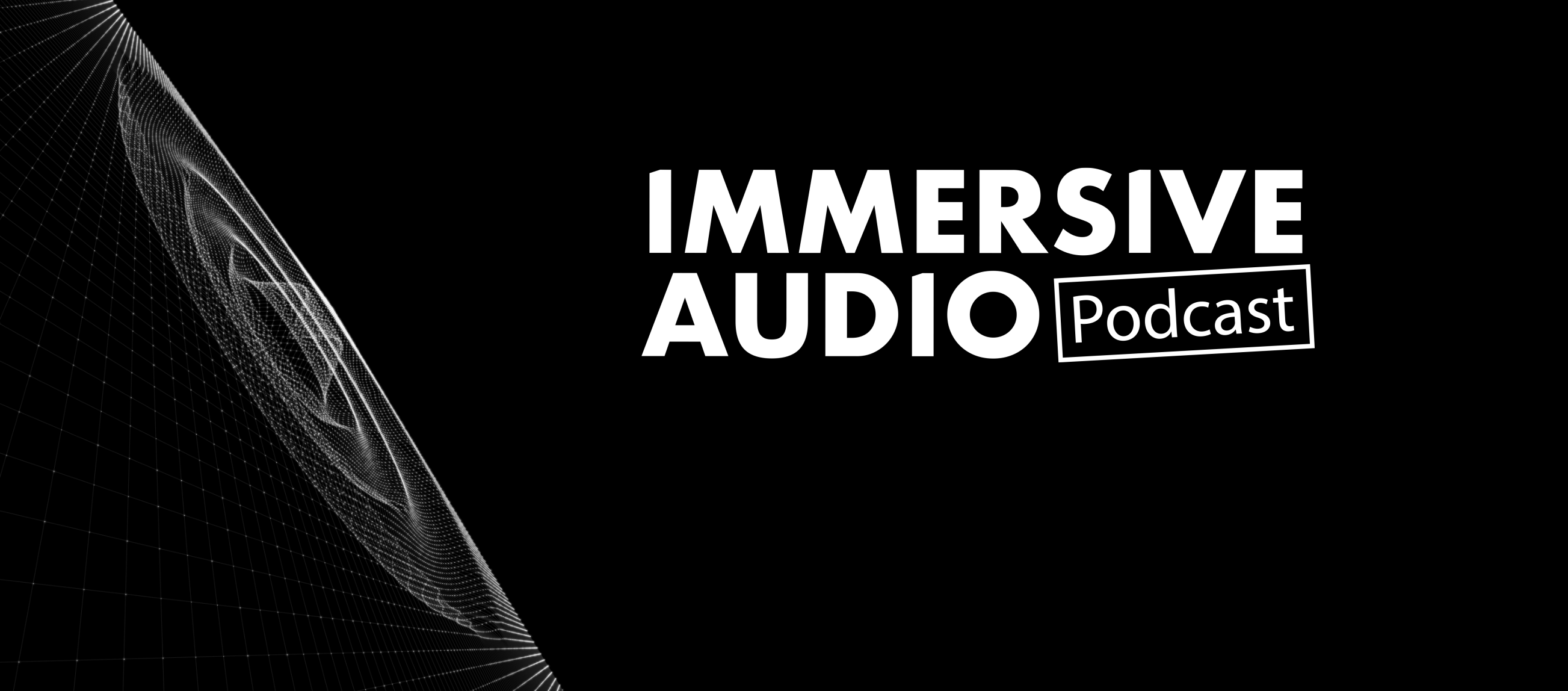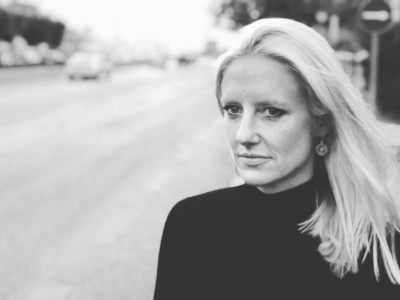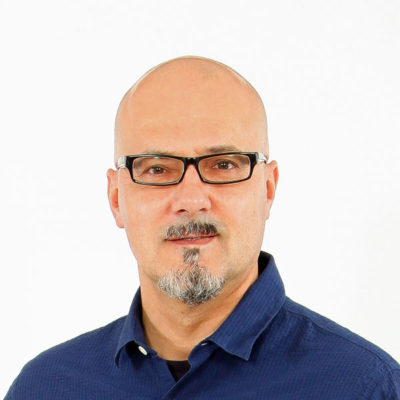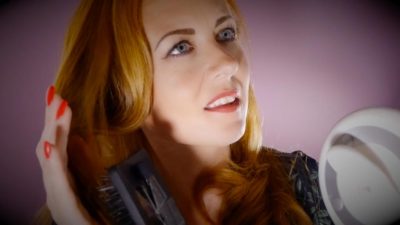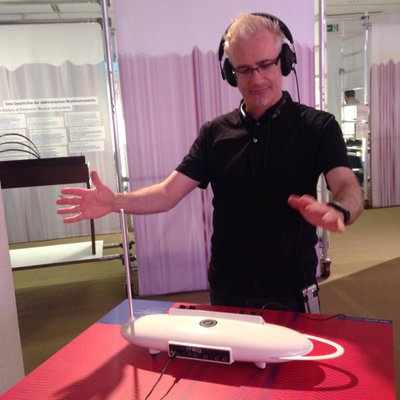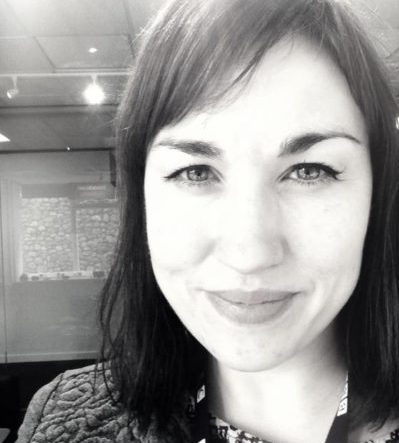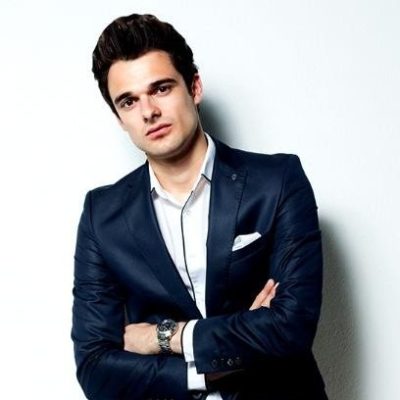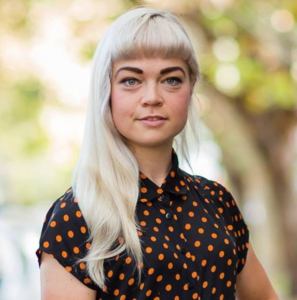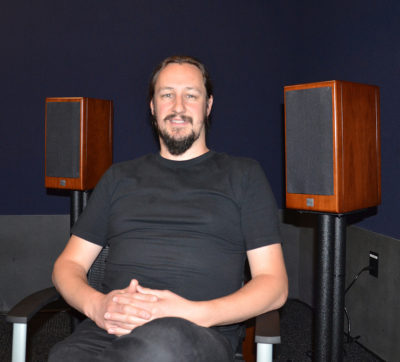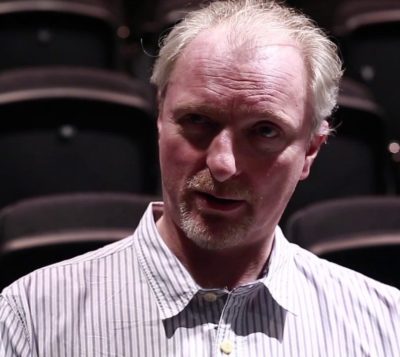
Summary
In today’s episode, Oliver was joined in our London Fields studio by Steve Snooks, sound designer and artist. Snooks runs an indie record label and dj sound system music and works at SubPac where he is involved with Partnership Development and Sales in Europe.
Snooks tells us all about haptics and the technology behind SubPac. He speaks about its uses in production and recreating physical environments as well as its uses in health and wellness and the therapeutic value of low frequencies.
Listen to Podcast
Shownotes
SUBPAC: http://subpac.com/
The Rattle: https://www.therattle.space/
Marshmallow Laser Feast: http://marshmallowlaserfeast.com/
The Feelies: https://www.thefeelies.io/
Hyperdub: https://hyperdub.net/
Kode9: http://feel.subpac.com/creator/kode9/
Peugeot ‘Fractal’ Concept Car: http://feel.subpac.com/news/peugeot-fractal-concept-car/
Chris Fonseca: https://www.chrisfonsecadancer.com/
MTV: http://www.mtv.co.uk/
Justin Wiggan’s Life Echo: http://www.life-echo.co.uk/
Digital Catapult: https://www.digicatapult.org.uk/
Transcript
Intro: Immersive Audio Podcast: In conversation with industry leaders, practitioners, artists, academics and entrepreneurs, discussing all aspects of this rapidly evolving industry from art, science and business to practical insights and project case studies. We aim to inform, educate, explore and unite the community.
Intro: Welcome to the Immersive Audio Podcast, brought to you by 1.618 Digital. Today, host Oliver Kadel is joined in our studio by Steve Snooks. Steve is a sound designer and artist, and runs an indie record label. He works at SUBPAC where he is involved in partnership development and sales in Europe. Today Snook’s tells us all about haptics and the technology behind SUBPAC. He speaks about its uses in production and recreating physical environment, as well as its uses in health and wellness, and the therapeutic value of low frequencies.
Oliver: Steve Snooks, welcome to the Immersive Audio Podcast. How’re you doing mate?
Steve: I’m good, I’m good.
Oliver: Good to see you. Thanks for stopping by.
Steve: No worries at all.
Oliver: Steve, I heard you guys recently moved to Rattle.
Steve: Yes indeed. So previously we was in Soho and now we’re over at Tobacco Dock in East London amongst a really good selection- a really nice little collective of music and tech start ups. I haven’t really had the opportunity to dive in and meet everyone. But yeah, it’s amazing. There are some really good people down there.
Oliver: How’s that going?
Steve: It’s great. We’ve got studios. Like I say, you know there’s lots of new start-ups, loads of tech, it’s all music related, basically. We’ve had some really exciting mentors that have come down and spoke with us. There’s so many people in the mix there like us. I really haven’t utilized the facilities yet or met everyone there but the studios are great. There’s going to be some really exciting things are going to come out of it.
Oliver: Sounds like a perfect place for you guys to be, given the fact that you’re an audio dedicated company as well.
Steve: Indeed it is. It’s almost perfect. It is perfect. When I first found out about it, it was like, ‘we have to be there’. And yeah, you know, a couple of weeks ago we moved in and yeah, back to East London where I was brought up – had enough of Soho, basically. We had like a little cupboard in the middle of Soho. So we’ve outgrown that. It’s good to be in East London now.
Oliver: Is it quite a big place – is it already filled up or there’s still loads room?
Steven: It’s a really cool space so, I mean- You know, for people that’ve heard Tobacco Dock, obviously you know the history of that sort of area on Wapping. It’s huge, and The Rattle have only got maybe one little corner of it. There’s less than 15 different companies involved where we are, and you know, the way that it’s looking at the moment I can see it really expanding and becoming quite a big thing. So yeah, it’s really exciting.
Oliver: Right, my first question as usual: I’m quite curious to hear about your personal journey. How did it all start for you? How do you get into the industry, your educational background, does it relate to audio, and then the whole transition to your role at SUBPAC. Can you tell us more?
Steve: Well I’m a musician and a sound designer. I grew up playing instruments. Always loved music, always. I’ve always been into music and I know it sounds like a really stereotypical sort of trope to say, you know, my father’s record collection of music in a house, but really you know I grew up with such a selection different music, but I’m heavily into electronic music and grew up with drum and bass, and going to raving and I was in bands when I was younger. And it got to a point where I decided, “I don’t wanna work with other people – I want as much… control, correct control.” So I went to study recording arts so that I could be the guy on both sides. I could control a desk, I could mix like an engineer as well as being a musician. And then I worked in retail for quite a few years in Pro Audio and then I kind of got my break working at Black Market Records. And I was a record buyer, you know drum and bass, garage, dub and reggae, and I was at Black Market for maybe six or seven years. And at that point, one of the founders of SUBPAC – he was going on a journey across Europe showing off this concept. At that point, it’d just finished on Kickstarter and I met him in the record shop and the rest is history, you know? We got on really well.
Steve: I wanted to get involved with SUBPAC the moment that I tried it, the moment that I actually was like, “this is, y’know, it’s an extension of the type of technology that you know that I like to use!” And to go out to raves and to experience music – physical music on sound systems – and to be able to get that and have it in another context and in places where you can’t have a sound system. So yeah, that’s kind of my journey really, you know, physical music.
Oliver: That’s really interesting, and it’s actually a perfect segway to my next question about the Subpac. So I would love you to talk a little bit more about the product and technology – Can you give us an overview of a SUBPAC for general listeners and, you know, things they might not know about? Haptics – how does it work?
Steve: Okay, so SUBPAC technology is- At the moment, we’re on the second generation of products, but effectively our devices enable you to monitor low frequencies. So in the same way that, you know if you’re standing next to a big P.A. system or a subwoofer, you know, you feel sound waves, low frequencies. It’s a physical sensation. So we have a wearable form and we have one that actually attaches to the back of the chair and it basically pumps low frequencies through your body very accurately using tactile trench juices and it is a very simple concept, but it’s something that you know you really have to physically feel to understand the depth of the sensation and the dynamics that you can get with that product. Initially, it was designed for music production, Pro Audio individuals, but as you are aware you know with a lot of other emerging technologies especially – I say emerging, VR has been about for decades – but how it’s being realised now to involve haptics and physical sensation in all of these experiences.
Steve: It’s key, you know? Sound is so important and not just within the audible range, so we end up working in so many different- you know, whether it be a gaming industry, we do a lot of work with Deaf and Hard of Hearing individuals and in community projects like that. There’s so many directions that we can go with this technology, it really is just the start of a massive journey, you know?
Oliver: I know that you guys are offering two key products as part of partners brand. What are the main differences between the two SUBPAC devices that are offered and how do you find consumers are using those most?
Steve: Okay so at the moment we’ve got three products technically. So we have a wearable phone which has been adopted by our VR enthusiasts and gamers and a lot of live musicians, you know for live. So you’ve got the wearable form, a very similar concept to the seatback version and it really is just the use cases. So a lot of people that are working in studios, engineers that are mastering or engineering or just creating music. I use the seatback which is the SUBPAC S2. And then we also have a wearable form, the M-2. We’ve just launched a new slightly upgraded version of the M2 called the M2X. And again, it’s the same principle tactile trench juices. It’s kind of like a vibro-tactile material in the vest and the new ones a little bit more powerful, less harmonic distortion and longer battery life basically. But yeah.
Steve: So really depending on the individual, we get a lot of people that use them, use a wearable when they’re trying to accompany their front of house, bassists, drummers, and then the seat back one is more for gamers and people that kind of like to sit when the working or when they’re just enjoying enjoying their sounds. But there is a major difference. You know when you look at different territories and you know which versions been adopted in America or like North America, the wearables are not more popular in Europe, it tends to be the seatback version. But again, you know different people work in different ways. I like to use both depending on what I’m doing. It’s really nice to wear the vest and play bass guitar. You know, there’s no other way of being connected to the instrument so closely. So yeah it’s the same principle but just just different forms.
Oliver: What are the benefits of using SUBPAC for producing audio and what are the key applications of the moment that you’ve seen across the landscape?
Steve: The most important thing… So you know if you’re being very analytical with your audio, if you’re an engineer and in mastering, some of the issues that you get with low frequencies or non directional sound is, you know, the acoustic space, colouring the sound, change in a tone, or not giving you an accurate representation of what you’re actually producing. So by using a SUBPAC, instead of you know the air being fluctuated by the cone of the speaker and then bouncing off the walls, the air is not the medium anymore. With a SUBPAC, your body’s the medium. So it’s a lot more accurate and it’s a lot easier to tell exactly what you’re doing. Initially, you know, the groundwork is, you know, Pro Audio guys. But like I say we’ve we’ve had a lot of people that are developing games, film, that there’s so many different forms of media that you know where sound is very important, especially low frequency sounds.
Steve: Just to add to the to the other question as well, not just, you know, issues with acoustics, but also being able to monitor low volume levels so obviously you’ll see or if anyone looks up SUBPAC after listening to this podcast, a lot of us come from a music background, music industry. So you’ve got a lot of people producing electronic music, a lot of DJs, and it’s very common for people to really blast the volume levels and you know, kind of really damaged their hearing. So generally when they’re pulling in volume levels up, it’s to get the physical sensation. So by using the SUBPAC, you can get that same sensation with the volume levels lower so you’re actually protecting your hearing which is key, you know, for people like me and you. We work in audio with our ears. That’s our work. You know? That’s a very important thing but you know, again there’s so many different applications. It really does sort of… it boggles the mind.
Steve: We’ve had some really cool partners over the last couple of years. People like Marshmallow Laser Feast, Grace Boyle with The Feelies, you know? People that are doing these sensory explorations and VR experiences and I think there’s so many more possibilities than just music production. At the end of the day, it is a creative industry so it really is… the SUBPAC’s amazing but depending on what you put through it, you know that that’s what makes it amazing. And some of the best experiences are when that technology has been used in a really subtle manner. But yes, to answer your question: Gaming, VR, a lot of people that are working with healing, healing with sound and some of the sort of esoteric things that, you know, our technology is enabling people to do a little bit more research into. Yeah, there’s so many possibilities.
Oliver: Just shows that how deep and wide that sonic dimension runs across that all kinds of aspects.
Steve: It’s crazy! I mean, you know, we’re very visual beings and sometimes we forget how important audio can be. Whether it’s physical or in the audible range but you know a really good example: put one of your favorite films on and just turn the sound off, or, you know, try and get something without a soundtrack. It’s something that if you took it away, very much so you’d would notice the difference. And I think usually when you have elements like that, you only notice them when they’re taken away. But audio is a very, very powerful thing across all the different mediums and nowadays, now you have a lot of the game experiences and, you know, spatial sound. We’re kind of at the edge now of all of these new formats and it’s really excites me. Low frequencies and non-directional sound are a very important element of that and that’s how we experience day to day lives, you know? And people forget that.
Oliver: I’m actually curious to hear whether you own a device as well?
Steve: Of course! I’ve got a collection of SUBPACs I can imagine, prototypes and yeah, allsorts!
Oliver: What is your favorite way of using SUBPAC personally, in your personal everyday life?
Steve: Very simply just to enjoy music. Like, whenever I listen to, I’d never- I don’t just use headphones and I don’t just use monitors. A SUBPAC is always in the mix somewhere. Most recently, I’ve really enjoyed getting back playing bass guitar with a wearable SUBPAC but yeah – gaming, watching films, everything I do pretty much! I’m really into sort of, synthesis and hardware synthesizers and things and to just be able to noodle about and mess about with that sort of lower end of the spectrum. Yeah. But I was simply just enjoy music. I still buy and sell records. Not necessarily electronic music, it can be any sort of style of music, but to just enjoy music and actually experience it a little bit closer to the producer’s plan as opposed to, you know, the tinny earphones and laptop speakers. Just enjoying media really. I know that’s a really boring answer but pretty much everything I sort of, consume in terms of media. There’s a SUBPAC involved there somewhere.
Oliver: It just sort of extends that inability to experience sound differently and just gives you that extra low end. You can feel that nuance in the lower end and it just completes the experience I suppose.
Steve: Exactly! And I think the thing is a lot of people- we’re not sort of adding to anything these, frequencies are in a lot of these mediums, you know. Whether it’s a film soundtrack with the special effects or whether it’s a game, and you know it doesn’t matter what it is. Generally, these sound designers and these composers and musicians are creating this, and our technology just enables you to actually delve into that that lower end of the spectrum.
Oliver: It’s really interesting, especially these days when a lot of people, especially younger generations, consume content on demand on the go. Smart devices, laptops tablets, etc. Also, kind of lower quality headphones arguably, you tend to lose a lot of detail in low frequency domain. Something like SUBPAC can just bring that detail back to those people because you might argue that, you know, there are like certain ways, certain methods that you would recommend in order to get the most out of it. For example for people who potentially live in urban environment in a quite small flat and simply physically cannot put like a big sound system that is capable of producing those frequencies.
Steve: That’s a perfect case, whether your making music, whether you want to watch films that, you know. Like you say, in an urban environment you’re living close to other people, you know you can’t always blare the music. You can’t always have a subwoofer, so it enables people to actually consume media in a much better, in a better way way really. But I think for me as a creative who comes from a background in sound system culture, to be able to educate people and to show that there is so much more that sort of stuff you know- I’m not a purist, by any chance, but fidelity is so important. People don’t realize the idea of a highly compressed files. YouTube rips, you know you can physically feel the difference between like a wav. or a lossless file and an MP3, you know?
Steve: And that’s not to say, you know, there’s pros and cons on both sides. You know it’s great that people can consume music nowadays and it’s very easy to find music. There’s more music than ever, it’s easier to create music, it’s easy to distribute it, which is amazing. But sometimes we need to just sort of sit back and put a record on the turntable, you know? And actually, you can feel the difference. You know, your brain has to work a lot harder while, you know, while you’re actually- and there’s studies the show this. You know, if you’re listening to something that’s highly compressed, you know your brain is working harder. You get fatigue from listening to things like that. Highly, highly compressed. But again, like I said I’m not a purist, there’s great, there’s pros and cons to both sides, but if you ever do get a chance to, you know, just listen to a really good record like a dub record with a SUBPAC there is nothing like it. It’s one of the most amazing things for me anyway.
Oliver: I’m wondering what the most interesting VR projects that you’ve seen SUBPAC being used in in recent years of months?
Steve: So I mentioned a couple of partners that we had earlier. So Marshmallow Laser Feast… I don’t know how to describe what these guys do, I mean, they’re a collective of artists and they work across all different types of media, but they’ve done a recent project in Montreal – There was multiple locations, room-scale VR, they was dropping balls onto gongs and recording that, and there was microphones so that when you spoke it would create a virtual representation of what you were saying and then waves… just look them up! It’s crazy, that they’re so out there.
Steve: And another partner Grace Boyle and The Feelies, she’d been doing projects with Greenpeace, an amazing cause, you know? The whole project, you know, in the Amazon basin. In a way, she was measuring and taking their, you know, whether it smells, physical sensations, audio recordings, binaural, you know, really put you into a specific place in order to, you know, raise awareness of this group of people that are basically going to be- their whole life is going to be changed because of, you know, a dam that’s going to be built in the Amazon Rainforest. And again, there’s a lot of studies that show the idea of creating presence in VR and how it affects us emotionally. So, there’s so many different things. For me, Marshmallow Laser Feast are just completely out there, they’re wild. They’ve done three or four projects over the last couple of years using wearable SUBPACs. And again, you know, we tend to do projects that are related to trees a lot? I don’t know what that is. But there’s two or three partners that have done the same sort of thing. But the idea of connecting us closer with nature and to raise empathy and to help people realize, you know, we need to be connected with nature a lot more. And I guess the physicality of SUBPAC technology is something that works quite well in that context. But yeah, there’s so many crazy projects out there.
Oliver: I think there’s something about our physiology and the fact that, you know, the sense of vibration within us as species develop much earlier than… you know, for example, visual data processing capabilities and like hearing the way we know now. If there are any people out there who would question what I just said, please spare me because I’m not-!
Steve: [laughs]
Oliver: But there’s something about that sort of Earth’s vibration and connection and… you know?
Steve: I think it’s quite simple, I mean you know if you was to physically feel something you know is low frequency like an earthquake that instills fear in you, you know, or maybe the idea of, you know, like large animals and danger, you know low frequencies, quite a lot of time are associated with fight or flight- you know, your adrenaline get’s pumping. So there’s many different avenues that this sort of technology has been used to either create- We’ve done some really cool projects with the label Hyper Dub, a guy called Kode9? So he’s got another project called Audint and a lot of it- Okay, he specializes in the study of sonic warfare, and to be able to create fear in people and to put them into scenarios where they’re basically shitting themselves, you know, it’s the opposite of a lot of other people’s work where it’s to do with healing. Right? Which is kind of a weird thing, you know, there’s two sides to that coin. But it just shows you that, you know, physicality and feeling sound is such a primitive thing. And like you say, it’s something that evolved very early on and that’s something, if you can tap into that in some form of experience, whether it’s VR, whether it’s a game, whether it’s just audio, you can evoke some very strong emotions. And there’s going to be a lot more work and also a lot of academic research into this sort of thing using that technology. So it’s really exciting. I’d definitely recommend you check out Kode9 and the Audint project, really sort of experimental but we’ve done some really cool stuff that you can have a look at on our blog on the website where, you know, it will give you all of the information about it.
Oliver: Awesome, we’ll put it in our show notes. Sounds very intriguing. And if there is any evolutionary theorists out there who would like to correct us-
Steve: Do so!
Oliver: Please do! [Laughs] We kind of start talking about it and we went into a kind of high concept talking about why a haptic device like SUBPAC, which offers this extra sensory dimension through vibration, you know, makes any experience kind of deeper and more fulfilling. But is there any research that we could talk about that supports the evidence that haptics feedback enhances the immersion of any experience?
Steve: Thing is, what we need to address here is that it’s not necessarily an extra thing. You know? When we experience reality on a day to day basis, you know, visually, audibly, you know. I guess with VR you’ve got your HMD that will do you visually, you’ve got your headphones. So up until now there’s maybe been a few projects and a few people that use, you know, tactile trenche juices, but not in a sort of form, you know, what we’ve made and what we’ve made commercially available. So really, it’s not like an extra sense, it’s that where we put in a few more pieces of the puzzle in, you know? At the end of the day, with VR and a lot of these experiences, we’re trying to recreate an realistic an environment as possible and without physical sensation. And, you know, to go beyond that, localisation and haptics. Like you say, I mean, what we’ve done at SUBPAC is that we’re very slowly pushing the whole concept of physicality. You know, there’s other people, there’s other companies that are working with the idea of localization and movement, but I think we’re quite far off with that sort of technology. We’re not quite at the holodeck just yet. So we’re trying to push that concept.
Steve: I’d like to cite some academic research but the thing is, especially with our technology, a lot of these studies are still ongoing. A lot of the studies that I’m very heavily into and I’ve actually looked into it have been more to do with reaction times, you know. So I’m not sure if you’re aware, we’ve done a project with Peugeot, like a concept car and the idea of having, you know, tactile trench within the automobile of the future. So there is a lot studies into that. So, you know, you will react a lot quicker to a combination of visual and physical compared to just visual. So, you know they’re safe. I guess the health and safety angle as well and also training with VR. You’ve probably seen this as well, a lot of a lot of people now, different companies, are using VR to train because it’s a lot safer, you know, to put their staff in these environments as opposed to a real world safety training environment. So yeah, I’d love to be able to say, “oh you can cite this on google scholar and this,” but honestly if you just look up presence and immersion, the more senses that are involved in any of these experiences, the more realistic it is, the more you feel immersed, the more presence you have. I think that kind of goes without saying, you know? I’m not an academic by any chance but you know the more senses that I can fill in any of these environments or VR spaces, you know the more realistic we’re going to feel it is and we’re gonna feel that we need more there than if those were not there, basically.
Oliver: No, I totally agree with that. I’m curious to hear, where is SUBPAC heading in 2018 and beyond?
Steve: There’s so many possibilities but I have to be pretty tight lipped to be honest. Some of the projects that we’ve been involved with, you know, quite recently is something that is quite close to our hearts at SUBPAC is, you know, working within the deaf and hard of hearing communities. So in a recent project I was involved with, there’s a gentleman called Chris Fonseca. He’s profoundly deaf and he’s a dance choreographer, so he uses our technology, the wearable form, when he does lessons, when he’s learning his own choreography or writing his own stuff, and about a week ago we was filming some pieces with him and MTV and it was a big, like a major project to do with getting young women into engineering. And also, you know, just educating people on what engineering is. A lot of people, they tend to have the wrong idea of what an engineer is. There are so many possibilities within that sphere, it’s so ambiguous.
Steve: So with Chris, we was doing some filming with the MTV guys and he was choreographing, you know, you’re writing a piece and the music was speeding up and then I was doing pieces to camera talking about our technology, kind of what we do, what we’re doing today. But again, you know, to cut a long story short, working an enabling people to experience music who, without technology, wouldn’t be able to do that. That blows my mind! You know, it’s amazing that we can enable people like us that, you know, are on this spectrum of hearing, to be able to access low frequencies and maybe delve into those low frequencies and experiment a bit. But imagine what it’s like to be profoundly deaf you know? The only way you would experience sound would be through physicality. And because our technology is so accurate, you know people can have singing lessons, people can discern the key of the song through vibrations alone. So stuff like that, that really, really gets me going.
Steve: And also, another project with a gentleman called Justin Wigan. This is another one that’s quite out there, we tend to attract people that are doing really weird stuff and quite sort of left field. So he’s working on a project called The Internal Garden where he’s… through some gadget, through some form of this device, it enables you to convert signals from living plants into MIDI and then from MIDI obviously, you know, that could be any sound source or any VST synth or whatever. So basically he’s enabling people to communicate with plants and interactive plants and the plants are communicating back via music and low vibrations. So it’s kind of like an internal dialogue really, it’s kind of circular, so depending on how you interact with it, or you touch a plant, or even the light levels, or you know, there’s so many different things. It will sing, effectively and he’s going to be doing a really cool thing so a big shout-out to Justin actually, because his project’s called Life Echoes and it’s all to do with memory and sound and, you know, how memory- how it works basically and how senses like smell and sound can be such strong indicators and, you know, reminders and… you know what it’s like. You know there’s a difference between feeling something and the smell is something about the way the brain works with smells you can just go all of a sudden, very vivid memories can be evoked from smell and physical sensations. And he’s doing a lot of studies with, you know, people that are even in prison or people have got, you know, depression and anxiety up to people that have got Alzheimers and, you know, just basically using technology and other types of audio technology to try and help these people you know? Through sound and through music which is, you know, music – it is a therapy and if we can make that sensation a little bit more, you know, I guess, stronger with the physicality of sound that, you know, I’m hoping that it makes much more of a difference. That what he’s doing is amazing. But that’s something again that you’ll be able to find out soon on our blog post where we’ll update people, but again it’s quite esoteric stuff, it’s quite unusual sort of areas of research. And also Justin will be getting, you know, there’ll be some proper academic research off the back of that to see how this actually helps people, you know, in forms of therapy and also Vibrotherapy and things like that.
Oliver: Yes, it’s fascinating. Wow, what a range of projects. I would love to speak to all those people and see what they’ve got to say. Amazing, Steve. Where do you see SUBPAC and immersive audio heading in the future?
Steve: I see it in very much the same way. Well, you know, at the moment it’s very normal to have headphones. It’s very normal to have speakers everywhere. This technology will be everywhere from cinemas to cars. And there’s so many different, like we’ve discussed, there’s so many different ways that it can be utilized. So for example in South Korea we’ve got Cinemas we’ve our technology actually embedded in all of the chairs, we’ve done the concept car with Peugeot, the Fractal, we’ve done installations in Westfield mall with Sennheiser. So I really do see this technology depending, you know, the world will form. There’s no reason to say, you know, it won’t be as as popular as normal to see people walking down the road with a SUBPAC just like they’ve got Bluetooth earphones. But you know, and I hope that it will educate people in terms of, you know, the idea of fidelity and quality of sound and also to make sure that they’re looking after the ears really. So yeah. Long, long winded answer is everywhere. There’s no reason why it can’t be in every place. And if you can have these sort of – I come from a background of raving and clubs and big sound systems – if you can have that same sort of physical sensation of sound in a different space that you can’t have a sound system like galleries, you know, it really should be everywhere and it will get to that point. It’s just that we slowly sort of educating people about the idea of physicality of sound and things like VR have really helped us push this concept. So yeah, everywhere. Everywhere.
Oliver: I like that answer and I totally agree. As we move into this experiential-multisensory-everything era, you know, next chapter of our lives, we’re going to see more and more things like that enter into market and penetrating our everyday life. I can’t see any negative things about it. I think it’s great. It’s just going to enrich our experiences with various media and just going to make it more fun and, you know, we’ll have a deeper connection to those.
Steve: That’s exactly what it is. A deep connection to, you know, the creative output of artists and only there’s no- like you say, it can be used as a type of technology that could be used in different ways by different individuals. But, you know, to enable creative people to have access to a little bit more of that spectrum, you know it is going to do wonders, you know, and a lot of these things in terms of sound healing, there’s a lot of therapeutic value of low frequencies and to be able to deliver that in a safe manner- The only way that you can kind of do that at the moment, you know, would be with our technology. So it’s something that, health and wellness is a big thing for us, you know, I think in this sort of highly hyper connected world where there’s so many things going on, sometimes it can be a little bit too much. I think, you know, using this sort of technology to, to sort of connect people with the real world again, even with this technology can really make a difference, you know?
Oliver: The haptic feedback industry has seen a lot of development in the last few years, as far as my experience goes anyway. I’m wondering if, do you see that as a quite competitive landscape? Do you have any rivals or perhaps do you see any other companies that are developing other products that tackle different kinds of issues and that you can potentially collaborate with and, you know, make your offering even stronger and more holistic?
Steve: Most definitely. As far as I see it there’s no competition. You know, it’s a very niche market as it is. So anyone, in or out, into that field is only going to, you know, push the concept of what we’re doing as well, you know. There really isn’t many commercially available products that are anywhere near this fidelity in the quality and the accuracy of what we do. But you know, there are other companies that are doing slightly similar devices. And you know honestly – and also this is the sales person in me talking as well, that is something that I kind of do at SUBPAC as well – it’s a gateway drug. You know, if you get something and then it’s like, “Oh this is great, I like the idea of tactility of this.” And then you get a SUBPAC and you’re like “Whoa. This is intense,” or it can be really intense. Haptics is a weird one I think, because you know there’s a lot of sort of military use and there’s a lot of sort of amazing technology but not commercially available. And I guess that’s that’s what we’ve really done well at SUBPAC, we’ve enabled this to become something that is commercially successful and you know, that’s off the back of music you know, off of the back of the creativeness of, you know, sound system culture, you know? So yeah, I think that the next stage that really interests me is the idea of localization of movement. When you talk to people about VR and you know, what is the end goal? I guess it’s, you know, something like the holodeck, to be able to recreate the subtlety of wind on your skin and things like that. But there’s no one there that I know of just yet unless it’s a government highly sort of secret thing. Yeah. I think the more that this becomes an area like a peripheral you know we have hearables – and I know these sound like buzz words and you probably come across a lot hearables, wearables, whatever – it’s normal to have headphones. It’s normal to have speakers. So the more people that enter into this sort of category of peripherals, the better for us. That’s the way I see it.
Oliver: Moving on to my final questions: Which project that you’ve been involved with are you most proud of and why?
Steve: Any of the projects that have enabled people with either accessibility issues, or hard of hearing or the deaf community experience music. It’s a major cause, you know, it’s something that I don’t think able-bodied people realize enough, you know. Accessibility is in venues. We take a lot of stuff for granted. So for me, you know that, I know this isn’t a specific answer but whether it’s Chris Fonseca, or whether it’s the music project that we’ve done, or anything on that sort of spectrum that enables people to access, you know, creativity or to make music or or to just actually be involved in these things that would normally be quite hard for them to do. That is the stuff that gets me going, you know? That really, really gets me excited where we basically enable in a new generation of creative people to get involved and it is quite a wide range. And I guess kind of an ambiguous sort of answer, but everyone deserves the opportunity to be creative. Without creativity, you know, we wouldn’t be here you know? And when we work with people and we sort of offer them our technology to utilize in these environments like that, that really gets me going. That really makes me happy, that stuff that gets me up in the morning. It’s nice to work with producers, and engineers, and producers and whatever, but we’re talking about potentially, you know, an untapped generation of creatives and who knows what they’re going to make in the future? These are people that have a slightly different view in that they don’t think necessarily in the same way because of their backgrounds. And I think I should take this as an opportunity to big up Chris Fonseca as well you know? I mean, imagine being a dance choreographer and being profoundly deaf, you know? That’s crazy. And I think for me, sound is so important. I can’t imagine what would be like to even have a section of my hearing, you know, the frequency band sort of pulled down and not be able to experience music in that way. So yeah, just working with people with wide ranging disabilities and to enable them to make and experience media in general, that’s what we really like to do.
Oliver: That’s very humbling to get that sort of perspective of a person who suffers for something that you can’t even imagine to live with, and just opens your eyes.
Steve: It’s an area thing, you know, like assistive technology. It’s something that, until I got involved in SUBPAC… The only thing that I ever experienced, you know, going to raves when I was growing up, you would get people that were deaf or you know that would want to be near the speakers and obviously, you know, that’s how they they can get some form of feedback from the music, but now they can do that wherever they are with a SUBPAC. It’s great for us. You know, we can whack a bit of dubstep and drum and bass and enjoy it without annoying our neighbors. But it’s changed these people’s lives and I hope that we continue to do that. And you know, if anyone’s listening to the podcast now you know we’ve got accessibility issues, they can’t, you know, their hearing or whatever, it may be, you know, feel free to reach out to us. We definitely want to be involved in those communities and whatever charitable cause it is. We want people to be able to feel music and sound. Whoever you are, wherever you are. And I think that’s what our technology enables us to do.
Oliver: That’s amazing point to finish, but I’ve got one more question go.
Steve: [laughs] Go on.
Oliver: You’ve worked across most industries and now you are in a unique position where you are always in touch with, you know, all kinds of people and companies that do unusual things and you must be learning a lot and you know, experiencing it-
Steve: It’s too much to take in. There’s so much stuff going on. It really is- I should’ve let you finish the question. [laughs]
Oliver: I think I’m asking too many questions in one question! But in simple words, where I’m going with this is, I’m just curious to hear, what piece of advice would you give to someone who is young and aspiring individual and would like to get into the industry? What would be that thing that you could pass on to another person?
Steve: I find it so hard to give advice. First thing: don’t take it. Don’t take any advice from people. Experience stuff yourself. Try stuff. For me, my personal journey, you know, and I’m not saying anyone should do this or whatever, but what has helped me is to always gravitate around things I love and enjoy. And I think I’ve just been very lucky to have gone on this journey that I have. But I’ve always been interested in music and sound and people and groups and creativity and so- My main advice is find what you love. Okay? Try stuff to as many things as you can (within reason) and find what you like and what you don’t like. You know, there’s no wrong. There’s no right. The role I have at SUBPAC I’ve kind of, you know, I head up sales, I do sort of more tech related stuff, I do demos, you know. I deal with artists and partnerships and it’s quite a wide range of things but the common thing amongst all of them is just dealing with people and creativity, so I’ll just stick- not stick to, but just find things that you really love that you enjoy.
What’s the worst that could happen? You might get really bad pay, but you’re you’d be doing something you enjoy. To give my advice to young people – like I’m THAT old, really [laughs] – is just go gravitate around things that you love. You can’t go wrong if you do that and you know just try and find people that you enjoy working with. And I guarantee that there’ll be some great things that you can begin to along that path.
Thank you. Where can our listeners find out more about SUBPAC or perhaps go and experience that physically themselves?
Steve: Yeah sure. I mean that’s the key thing, you need to try SUBPAC. But if you wanna have a little look at the website – subpac.com – There’s great list of loads of musicians, producers, engineers, creatives that you may recognize them that you respect enough to go up and, “you know what I’m going buy it without trying it,” but if you do wanna try it, we’ve got Pro Audio shops in London. If you look on our website, you’ll see all of the retailers that are available in your territories across Europe or wherever you may be and also keep an eye out, you know, film festivals, you know, VR experiences,places like Digital Catapults that are helping this digital economy in the UK. So many creative and cool people using our technology, I’m sure if you do a little bit of research, you’ll find somewhere where you can actually try it out and if all else fails, you can just hit me up and I’ll come and meet you and I’ll give you a SUBPAC demo.
Oliver: Steve Snooks, it’s been a great pleasure.
Steve: My pleasure mate.
Oliver: Thank you very much for stopping by and talking to me.
Steve: No worries at all. Thank you.
Outro: You’ve been listening to the immersive audio podcast hosted by Oliver Kadel with guest Steve Snooks. This episode was produced by Gillian Duffy, Oliver Kadel and Giacomo Corpino, and included music by Knobs Bergamo. If you enjoyed listening, please go to Apple Podcasts and rate, review, and subscribe. Visit 1618digital.com to access the show notes, other episodes and any bonus content. Follow us @1618digital on Twitter and Instagram. Thanks for listening!



